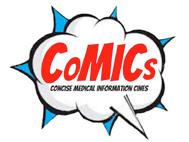Annual Review 2021

‘I look forward to working closely with you, to build a healthier European Union.’
Stella Kyriakides EU Commissioner for Health and Food Safety


‘I look forward to working closely with you, to build a healthier European Union.’
Stella Kyriakides EU Commissioner for Health and Food Safety
The European Society of Endocrinology (ESE) is at the centre of Europe’s endocrine community, representing over 22 500 endocrinologists across the continent. We are actively shaping the future of endocrinology – the study of hormones – to improve science, knowledge and health throughout Europe and beyond. Our wide inclusion of diverse, innovative communities is our strength. By uniting, supporting and representing our specialty, we can help drive
• New ESE White Paper ‘Hormones in European Heath Policies’ welcomed by EU Commissioner for Health and Food Safety
• ESE membership exceeds 5000 for the first time
• Record Impact Factor of 6.664 for European Journal of Endocrinology

Pictured below:
(L-R top) Magdalena Klimontowska Scientific Programmes Project Manager

Victoria Withy Sales and Marketing Manager
Andrea Davis Governance and Office Manager
Claire Arrigoni Event Manager
(L-R middle) Dirk de Rijdt Director of Strategic Partnerships
Helen Gregson Chief Executive Officer
Vicki di Guisto Scientific Programmes Manager
(bottom) Mischa van Eimeren EU Liaison Officer (not present) Armelle Mabiala Executive Assistant
Dear Friends,
It is a pleasure to welcome you to the 2021 Annual Review, my first as President of ESE. I thank Andrea Giustina for his stewardship and wise guidance, from which we all benefited greatly, and for leading the Society in the first months of 2021.

2021 will go down as another challenging year for us all. It amazes me that we have achieved so much under such difficult circumstances, which once again forced the majority of our events online and restricted the possibility of seeing each other. I was delighted that, in the final quarter of the year, we could finally hold our first face-to-face event in two years – our EuroPit meeting in beautiful Annecy, France (pictured, right). This will always be remembered as a turning point, when we at last began to see our way out of the pandemic, with the prospect of some sort of normality as a wider community.
Despite this, we will continue to hold some of our events online. Feedback indicates that people find it a very convenient format for our educational activities. You will see most of the postgraduate and clinical update courses in 2022 being held in this way.
The publication in May 2021 of our White Paper, ‘Hormones in European Health Policies: How Endocrinologists can Contribute to a Healthier Europe’, was an important moment, providing the basis for our policy and advocacy activity, which has really taken off over the last few years (see page 6).
We could not work successfully on our policy and advocacy objectives, however, if we were not fully supported by the national societies in Europe and the work of the ESE Council of Affiliated Societies. We now officially represent over 22 500 members throughout Europe, through the ESE Advocacy Representation Scheme. In 2021, we also extensively enhanced our collaboration with the patient community, introducing our Patient Advisory Group Affiliate Membership Scheme, which 18 groups have already joined.
Nearly 3500 delegates from over 100 countries attended our Congress in 2021, which was once again online. This worked extremely well, but we look forward to getting together in Milan, Italy, in 2022.
In October 2021, I had the immense pleasure of hosting a face-to-face Executive Committee meeting in Munich, Germany (pictured on page 2). What a wonderful time that was! We had fun ... but we also worked very hard. The focus of the meeting was the development of our 2022−2026 strategy.

Elsewhere in this review, you will see how successfully we met the targets of our 2017−2021 strategy. One example was 34% growth to reach over 5000 individual members, with a particular increase in our early career membership, who are so important to us.
It was time to look forward to the next stage. The pillars for the new strategy, developed and proposed by our Executive Committee, underwent an extensive consultation process involving our membership, the patient advocacy group community and our industry partners. Revision of the strategy in light of this feedback generated the version that you can find on the ESE website at www.ese-hormones.org/about-us
We hope you find this suitably ambitious for our growing society. I am pleased that the Society’s financial performance (see
pages 10−11), which was due mainly to a very successful online Congress and our outstanding publishing activities, will allow us to move forward with numerous exciting initiatives in 2022 – including a digital transformation project to deliver services to all our members more effectively.
I am delighted by how we have, once again, demonstrated the strength of the endocrine community in 2021. It is an honour to be the President of ESE.
Martin Reincke ESE PresidentTwitter: @EsePresident

We thank all members of our Executive Committee, especially those who completed their terms of office in 2021. We welcome our new members.
*Nurse Committee, ECAS and EYES representatives are ex-officio Executive Committee members

Andrea Giustina guided the Society with great care and resolve through the upheaval of the pandemic. In 2021, he stepped down after two years as President.
His term of office saw ESE embrace his vision of inclusivity, increasing the membership and strengthening the voice for endocrinology in Europe.

Fortunately, we still benefit from Andrea’s broad experience, as Local Organising Committee Chair for ECE 2022, and as Chair of the European Hormone and Metabolism Foundation (ESE Foundation; www.esefoundation.org). We owe him a huge debt of gratitude.










Martin Reincke took up the presidency of ESE as Andrea’s successor. See page 3 for his review of 2021.





‘Ours is a common “house”, accommodating − and advocating at the very highest institutional level for − all endocrinologists and endocrine patients. The objective is to finally attain recognition for their work and for the relevance of their disease, respectively.’
Andrea Giustina ESE Past-PresidentMirjam Christ-Crain Education Committee Chair (from May 2021)
‘My presidency will be dedicated to innovation. The best way to predict the future is to generate it.’
Martin Reincke ESE President
ESE successfully surpassed the objectives set out in its strategy for 2017−2021, providing a sound basis for future developments.
The
launched to improve endocrine health across Europe Increase in Impact Factors:
e-ECE 2020 and e-ECE 2021 were successful digital Congresses © iStock/Boarding1Now
Membership grew by The ESE White Paper was published − ‘Hormones in European Health Policies’ 53 National Societies and 12 Specialist Societies are now affiliated to ESE © Shutterstock/Image Point Fr


34%
Our membership review ensured that the benefits enjoyed by ESE members are relevant to both their area of work and their career stage. Individual membership categories now comprise Clinician, Clinician Scientist, Allied Health Professional, Nurse and Scientist, while career stages are Full, Early Career, Student and Retired.
Restructuring our website to correspond to the new, easy-to-use, membership categories led to a 29% increase in web page views.
Find the tailored benefits for each membership/career stage category at www. ese-hormones.org/about-us/membership.
ESE’s new, free Patient Advisory Group (PAG) Affiliate Membership supports greater collaboration between PAGs and the Society. Some 18 PAGs have already joined. They will have the opportunity to meet with ESE twice yearly; the inaugural board meeting takes place at ECE 2022 in Milan, Italy.
Find out more at www.ese-hormones. org/patient-advocacy-group


ESE’s White Paper, ‘Hormones in European Health Policies: How Endocrinologists can Contribute to a Healthier Europe’, was welcomed by key figures at European institutions as a valuable contribution towards improving public health.
The product of a two-year consultative process, the White Paper provides a European policy focus around obesity, rare endocrine diseases, endocrine cancer and endocrine disruptors. It was endorsed by 45 national endocrine societies and 7 European and international specialist societies, as well as Endo-ERN.
Key officials, including John F Ryan, Director of Public Health at the European Commission, attended its launch by webinar. Part of the White Paper subsequently inspired the European Parliament’s report ‘Strengthening Europe in the fight against cancer’
Read the White Paper at www.ese-hormones.org/advocacy/ eses-white-paper.
Stella Kyriakides, EU Commissioner for Health and Food Safety, addressed e-ECE 2021 about endocrinologists’ vital role in improving public health. She welcomed the ESE White Paper, saying ‘You have a huge contribution to guide us towards a healthier future’ and inviting further collaboration between the EU Commission and ESE.
Watch her presentation at www.youtube.com/watch?v=jqrZmlXAQLs.
The ESE Council of Affiliated Societies (ECAS) stimulates collaboration between ESE and Europe’s national endocrine societies, engaging the entire community in discussion of ESE’s policy and advocacy objectives.
ECAS secured the national societies’ endorsement of the ESE White Paper, as well as:
• leading a symposium at e-ECE 2021 on ‘Hormones in European health policies’
• planning work in the four priority areas defined by the White Paper
• developing the ESE Advocacy Representation Scheme (EARS) and the EARS Newsletter
• relaunching and expanding the Centres of Special Interest
By collaborating with others, our messages spread faster and are heard more clearly.
• ESE joined the European Health Policy Platform and the European Cancer Organisation
• We responded to consultations on topics such as endocrine disruptors and the European Health Data Space (with ESPE, Endo-ERN and EuRECCa).
• ESE and ESPE held a joint symposium at the European Commission’s 3rd Annual Forum on Endocrine Disruptors, an event attracting over 1000 people from 40 countries.
• Our work with the BioMed Alliance has ensured smoother implementation of the EU Regulation on in vitro diagnostic medical devices, so hospitals and laboratories will be better prepared.
• Development of joint guidelines with the Endocrine Society for corticosteroid therapy and diabetes in pregnancy is under way. Together, our societies launched the Transatlantic Alliance Award (see back cover).
• Joint sessions at e-ECE 2021 saw ESE collaborating with eight international associations
• Our work with Endo-ERN continued, to collect data on COVID-19’s impact in patients with rare endocrine conditions.
‘We call on all policymakers in Europe to recognise the importance of endocrinology in all EU and national health policies.’
ESE White Paper
Without research, there would be no progress in clinical science. Supporting research work underpins all of ESE’s objectives

ESE’s European Research Funding Hub provides news of European Commission funding schemes. In the next five years, €13.2 billion will be available. The hub will detail when research calls will be published and help researchers, at all career stages, to find opportunities in line with their profiles. See www.ese-hormones.org/research/ european-research-funding
The four-year PARAT Programme has developed expert consensus findings in the care of patients with parathyroid disorders. The PARAT co-Chairs hosted a webinar to discuss the findings with the wider clinical community for the first time. It was delivered by 15 invited experts and attracted 1141 registrants.
See the consensus findings at https://doi. org/10.1530/EJE-21-1044 and PARAT Learning Zone materials at www.esehormones.org/PARATLearningZone
The ESE AGHD Audit was initiated in 2018 to determine best practice in adult growth hormone deficiency The key findings were presented as one of our online ESE Talks series, and attracted 164 delegates. See www.ese-hormones.org/ ESETalksAGHD
The ESE Clinical Practice Guideline on functioning and non-functioning pituitary adenomas in pregnancy was published in 2021, the culmination of extensive collaboration and consultation by the Guideline Working Group. Find the guideline and supplementary materials at www.ese-hormones.org/esecpgpituitaryadenomas.
The 8th Annual EYES Meeting (EYES 2021) was the first to take place virtually, allowing early career endocrinologists to showcase their research, alongside inspirational talks from clinical and academic endocrinologists and interactive workshops in career planning and management.
The largest ever EYES meeting, it made use of pre-recorded presentations from participants in different time zones, to avoid technical issues, but presenters were live for Q&A sessions, which generated plenty of discussion!
3 days
250 delegates from 40+ countries
EYES 2021
30 oral presentations Virtual poster hall

ESE also supported research through its new Spotlight on Science masterclasses (see page 8).
EYES Coffee Connections is a free, monthly, online opportunity for early career colleagues to join peers around the world to chat about a focus topic, with invited contributors or a panel. Eight events took place in 2021. See www.ese-hormones.org/eyes-coffeeconnections
Following the success of our first virtual Congress in 2020, our ambition for e-ECE 2021 was to provide the ideal virtual event for endocrinologists worldwide. Six channels allowed attendees to follow all the sessions, organised by ESE Focus Area, including everything a delegate would hope to enjoy at a face-to-face meeting.
Alongside the award and plenary lectures, symposia, debates, Meet the Expert sessions, oral communications and e-posters were events for nurses and early career participants. The ECAS session covered
‘Hormones in European health policies’, and there were eight joint sessions with international associations. Partners from industry played an active role, and we welcomed patient groups to hub sessions.
Our grateful thanks are due to Riccarda Granata (Congress Committee Chair) and all of the Programme Organising Committee, especially Daniela Cota (Basic Science CoChair) and Lars Rejnmark (Clinical Co-Chair), as well as the ESE President and PresidentElect and other Executive Committee members.
Throughout 2021, ESE nurtured people working in all areas of endocrinology and at all career stages, by organising almost 30 events designed to develop and update their knowledge and skills. In this way, the Society maintained a sense of community among colleagues separated during the ongoing pandemic.
Six ESE Spotlight on Science sessions saw experts in endocrinology conduct masterclasses for a total audience of 334 research scientists, from over 50 countries. Topics ranged from epigenetics to assisted conception, and from COVID-19 to molecular tools in diagnosis.
An expanded programme of ESE Clinical Updates and accompanying reports covered Cushing’s, acromegaly and obesity for clinicians/specialists, attracting 161, 320 and 104 attendees respectively. Each comprised three 2-hour webinars on consecutive days, averaging 18 talks per topic.
3400+
8 registrations
joint sessions with international associations


1392
abstracts from 100+ countries
5 days
across 6 channels
Two ESE Postgraduate Training Courses in Clinical Endocrinology, Diabetes and Metabolism each took place as five 2-hour webinars spread over a week, allowing participants (266 for the spring course and 149 in autumn) to discuss a range of topics with leading European experts.



Webinars presenting the findings from two long running ESE research programmes took place in 2021: the PARAT Programme and the AGHD Audit (read more on page 7).
The highly successful 9th EuroPit (European Multidisciplinary Course of Pituitary Tumours) was the first in-person event since the pandemic. It was attended by 25 students and 18 faculty (plus 4 remote speakers).


ESE also encouraged the development of early career colleagues through EYES events (see page 7).
ESE supported the Growth Research Society Meeting for consensus statement development. See www.ghresearchsociety. org/GRS%20consensus.htm

‘I smile thinking back on three days full of interesting lessons, discussions and laughs with many friends and colleagues from all across Europe.’
Daniele Cappellani EuroPit attendee
ESE’s peer-reviewed journals both achieved their highest ever Impact Factors in 2021, attracting high quality research and reviews from ESE members and others in the field. ESE members receive free online journal access, reduced rates on print subscriptions and discounts on open-access publication fees.
European Journal of Endocrinology published 208 papers in 2021, an increase of 4.3% from 2020. Of the 1264 submitted articles, 263 were from ESE members, and 82 of these were published (40% of journal content).
The ESE Clinical Practice Guideline on functioning and non-functioning pituitary adenomas in pregnancy has been downloaded over 17 500 times since its publication in September.
Maria Fleseriu and Markus Seibel were promoted to Deputy Editors of the journal.
Endocrine Connections received 616 articles in 2021, of which 201 were published (the largest number published in a single year, and a 39% increase compared with 2020). There were 98 submissions from ESE members, of which 40 were published (20% of journal content).
Adrian Clark became Editor-inChief of Endocrine Connections at the start of the year, and Rosalia Simmen joined as Deputy Editor.

‘The journal’s success is based on the dedicated commitment and specialist expertise of the fantastic global Editorial Board’ Wiebke Arlt Editor-in-Chief European Journal of Endocrinology
Head to our new online shop for ESE and EYES branded clothing and other merchandise. See www.ese-hormones.org/ ese-shop
European Journal of Endocrinology
6.664
Endocrine Connections
3.335
‘The Journal Impact Factors are a milestone for the Society. European Journal of Endocrinology underpins ESE’s role as the voice for endocrinology in Europe. Endocrine Connections continues to gain valuable traction as a key journal for endocrine research dissemination.’
Martin Reincke, ESE President
Endocrine Views is the new name for ESE News, reflecting its fresh new focus as the forum for the latest opinion and debate in our field. The Editorial Board, led by Justo Castaño, seeks to encourage discussion of cutting edge science, alongside news of the latest ESE initiatives. Expect further exciting developments in the future.
To help medical students and junior doctors engage with the latest research, the Concise Medical Information Cines (CoMICs) team collaborated with European Journal of Endocrinology to produce EJE CoMICs. These bite-sized two-minute videos present selected journal articles in an engaging infographic format, free of charge.
Find them on the ESE YouTube channel at www.youtube.com/esehormones/ search?query=comics

ESE’s vision is to shape the future of endocrinology, and our mission is to advance the field. To be successful in these aims, our strategy is to establish financial sustainability and develop excellent commercial relationships with a long term perspective.

In 2021, due to the ongoing pandemic, ESE continued to focus on ensuring the Society’s financial sustainability, in the face of potentially very significant financial challenges. The budget that was originally approved was carefully reviewed by both the Finance and the Executive Committees, and updated in the main areas of activity. Expenses were reduced where possible; revenue was also forecast to reduce. The overall aim was to ensure that the financial position was as secure as possible.
Due to careful management by the trustees, the eventual outcome from 2021 was a rise in the organisational value of ESE of just over €1.5m from the previous year. Funds carried forward to 2022 are €6.3m (compared with €4.8m a year earlier).
This has resulted in a surplus above the reserve requirement of €2.54m.
The main reasons for the surplus were higher-than-expected revenue for our Congress (e-ECE 2021) and the publishing revenue from European Journal of Endocrinology, and lower expenses due to reduced travel and face-to-face meetings.
The ESE trustees are aware that, at the end of 2021, significant funds were being held above the reserves, and have taken this into account when reviewing the strategy for future years. Due to the strong financial performance, investment in specified projects is being progressed, in line with the 2022−2026 strategic plan. These include a major data integration project, implementation of a learning management system and additional staffing resource.
However, a relatively careful approach remains necessary, due to the continuing uncertainty in relation to the pandemic and to ensure ESE’s ongoing financial stability.
• The eventual outcome from 2021 was an operating surplus of €982 000, a gain on investments of €566 000 and a rise in the organisational value of ESE of just over €1.5m from the previous year.
• The major income streams for ESE derived from individual and corporate memberships, corporate sponsorship of activities, European Journal of Endocrinology and the ESE Advocacy Representation Scheme. A substantial surplus was also made from Congress activities.
• The major items of expenditure resulted from support of various activities, including the Congress, grants and awards, policy and advocacy, our newsletter and website, and European Journal of Endocrinology. In addition, ESE had overheads, of which the most significant related to running its secretariat services, for both outsourced and in-house staff.
• Continued investment was made in our policy and advocacy work, and the focus of the activity was on the White Paper, ‘Hormones in European Health Policies: How Endocrinologists can Contribute to a Healthier Europe’, which was launched in May 2021.
• Most of the educational events remained in a virtual format, with one smaller event (EuroPit) returning to a physical format.
• Investments performed strongly overall, resulting in the gain outlined above of €566 000.
• A Finance Director is retained on a consultancy basis for advice purposes, and our auditor is Moore Kingston Smith, a top 20-rated accountancy firm, who continue to deliver an excellent service.
We are delighted that ESE has continued to show financial resilience, and thank everyone for their support during this challenging period.
We look forward to continuing to support our endocrine community!
Djuro Macut Treasurer, ESE
We are grateful for the continued support of our 2021 corporate members, which increases the range of events and activities that ESE is able to offer its members.
ESE Premium Corporate Members: Ipsen, Pfizer, Recordati Rare Diseases, Takeda
ESE Corporate Members: Advanced Accelerator Applications, *Alexion Pharma GmbH, Amryt Pharmaceuticals, *Chiasma, Diurnal, HRA Pharma, Kyowa Kirin International, Novo Nordisk
ESE Supporters: Crinetics Pharmaceuticals, Isotopen Technologien Munchen AG, *Soleno Therapeutics
*New for 2021
Our prestigious grants and awards recognise world-leading scientists and clinicians across the field of endocrinology, whilst our early career awards provide support for the next generation, to help them achieve their potential. ESE thanks Ipsen for supporting the Geoffrey Harris Award, and Novo Nordisk for supporting the Jens Sandahl Christiansen Award.
Geoffrey Harris Award
Vera Popovic-Brkic (Serbia)
European Journal of Endocrinology Award Ruben Nogueiras (Spain)







Clinical Endocrinology Trust Award
Rosario Pivonello (Italy)

European Hormone Medal
Niels E Skakkebæk (Denmark)
Young Investigator Award winners
Honorary Membership
AJ van der Lely (The Netherlands)
Special Recognition Award Justo Castaño (Spain)
Special Recognition Award Sofia Llahana (UK)
Jens Sandahl Christiansen Award Panagiotis Anagnostis (Greece)
Anastasia Arvaniti (UK), Márcia Faria (Portugal), Vittoria Favero (Italy), Antonio C Fuentes-Fayos (Spain), Julia Krupinova (Russia), Georgios Markantes (Greece), Narjes Nasiri-Ansari (Greece), Claudia Pivonello (Italy), Roby Rajan (UK), Prudencio Sáez-Martínez (Spain), Valentine Suteau (France) and Frederique Van de Velde (Belgium).
Poster Award winners
New ESE Awards
A joint ESE and Endocrine Society initiative, the Transatlantic Alliance Award, will recognise international leaders in endocrinology for significant advances made through collaboration in both the USA and Europe.

The new European Endocrine Nurse Award will be presented for excellence in endocrine nursing practice, research, leadership and training, as well as patient engagement.
Clinical posters: Olulade Ayodele (USA), Nienke Biermasz (The Netherlands), Eleni Kourti (France) and Elina Peltola (Finland). Basic science posters: Nathalie Boulet (France), David F Carregeta (Portugal), Salvatore Sciacchitano (Italy) and Vaishnavi Venugopalan (Germany).
Follow us:
ESEndocrinology
EuropeanSocietyofEndocrinology
esehormones
European Society of Endocrinology